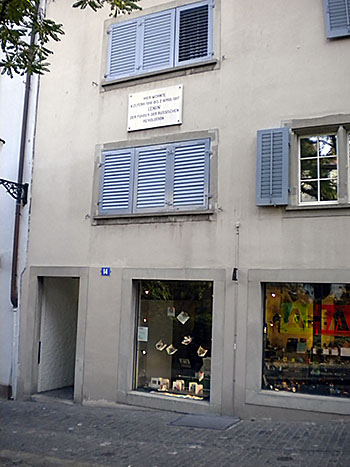![]()
I am always searching for new online, digital tools, especially anything that supports mapping or GIS options. Some time ago, a former student pointed out to me that ArcGIS online has a feature called Story Maps. (There are new story maps and classic story maps. I prefer the classic story maps, but you can use either.) The App can be used to develop an online photo tour or a kind of map project. There are actually several different kinds of story maps, and you can look through all the galleries with examples of published story maps. Here is an example that I created based on the churches in my home town in Pennsylvania. And here is my World War I example, Sergeant Lefèvre in the Great War, 1914-1916. It is a pretty straight-forward process, and it is a project that can be a lot of fun to work on. Here are some more great student examples.
- Mary Grace Sheers, HIS 112, the American Disability Rights Movement
- Dusty Lockhart, HIS 111, Women of Antiquity That Shaped Civilization
- Caitlin Belue, HIS 218, World War I Era military installations in and around Virginia
- Aya Dalawy, HIS 101, Christianity through the World's Oldest Churches
- Katherine Hernandez (HIS 112), Atrocities of the Civil War in El Salvador
- Ryan Hammad, HIS 112, Napoleon and the Italian Campaign
- Sarah Atkinson, HIS 111, The Spread of Early Islam Through the World's Oldest Mosques
- William Wimmer, HIS 111, has created a nice story map on the Shang Dynasty.
- Sophia Lutz, HIS 112, Newport, Rhode Island - A Legacy of Religious Freedom
- Carrie Griffith, HIS 111, The Crusades
- Miyoko Spratley, HIS 112, Japanese War Relocation Camps 1942-1946
- Keegan Hughes-Segroves, HIS 112, Meuse-Argonne Offensive
- Adam Zemel, HIS 135, Dylan, January '61-July '66
- Patrick McKinney, HIS 218, The First Battle of Bull Run, Manassas, VA
So, give it a try and create a story map. Here are the requirements for your story map.
- It should be devoted to some appropriate historical subject that fits your course content and time span. (That is a pretty broad definition. You should discuss ideas with your instructor.)
- You must have a corresponding geographic location for your topic. For example, if you choose as a topic the World War I battle of Verdun, then your geographic location will be defined as Verdun.
- Decide on the kind of story map that you will create. When you look at the Story Maps website, you will see that there are different kinds.
- Sign up for a free ArcGIS online account.
- You will need to use at least ten data points (photographs/images) in your project, and you can include more. The first place that you should look for images is the Creative Commons Search Engine. At least two of your images should be found here, or somewhere else as long as they have a creative commons use license. All images that you use should have specific URL citation link for the exact location of the image.
- Each item on your story map should have a detailed description, identifying the item and explaining its importance and relevance to your overall topic.
- Your story map should have a clear descriptive summary of the project.
- Once you have finished your story map, you will publish your project on the web.
- Please submit an early draft of your work to your instructor for feedback; just email the URL to your professor.
- When you are done, submit the URL of your story map on Canvas and also include a short explanation of your work.
